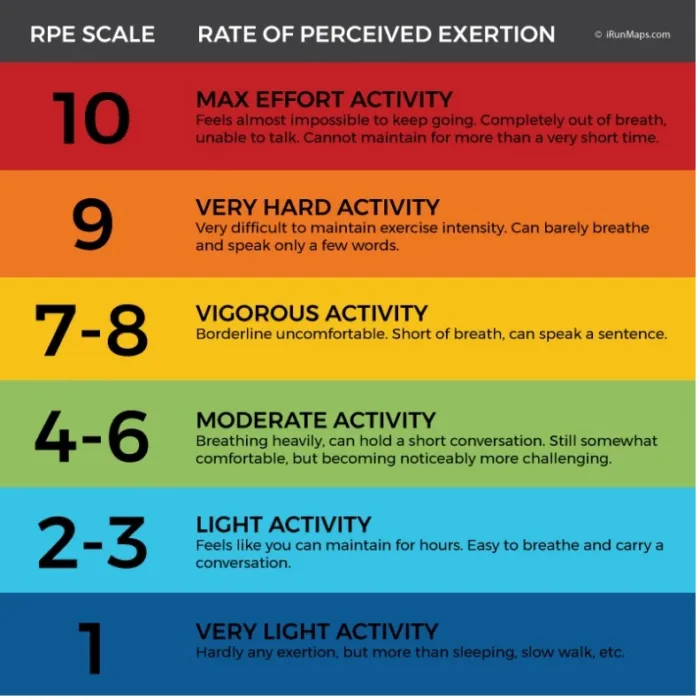Rating of Perceived Exertion or RPE is a system for measuring training intensity in athletics. Whether you like to lift weights, participate in yoga, or run, you have some days that are intended to be easy days and some that are supposed to be harder. As runners, it’s common to get caught up in pace as our only measurement of intensity – but is this the best metric for maximizing your efficiency and potential?
Multiple studies have confirmed the validity and reliability of using RPE for consistently measuring intensity across a wide range of sports and athletic groups, and especially with runners. So, if you are worried about not getting a “good” workout without constantly checking your pace or heart rate, put those fears aside. Without being provided heart rate (HR) or speed data, most athletes are able to accurately work within a desired HR zone and hit prescribed paces basing their effort solely off of RPE. These results have been repeated in the literature to demonstrate that RPE can effectively correlate with HR intensity and zone-based training without having to wear a HR monitor. Pacing from intensity alone takes practice, but experienced runners (of all paces!) can accurately estimate paces throughout their runs using RPE.
As a performance physical therapist and a running coach, the most common mistake I see runners make from the recreational to the professional level is clients running too fast on easy days leaving little left in the tank for the days they want to go hard. This not only negatively impacts performance but can increase overuse-type injury risk that we see all too often sidelining runners. Using RPE instead of relying solely on pace metrics allows an athlete to truly focus on recovery during easy runs, and often results in faster splits and feeling stronger on harder effort days. It also accounts for outside factors that we may not be able to control, such as weather, terrain, or other body factors including stress or non-sport related fatigue.
Benefits of utilizing RPE for measuring intensity:
- Enhances body awareness and ability to pace by “feel” instead of relying on just your watch or splits.
- Accounts for changes in the athlete’s ecosystem to guide training intensity, including stress, changes in sleep, or other environmental factors such as weather or terrain.
- May decrease chances of overtraining and the consequences that come with it, including burnout and overuse-type injuries that we see so commonly in the running population.
Yes, there is a time and place for going after specific pace targets in a workout. If numbers are you jam and you love always wearing a HR strap, you do you! However, before you get too attached to the numbers on your watch, take into consideration the benefits of effort-based pacing and how it can improve not only your training experience but the results you get as well.
Want to learn more about RPE or how to utilize it in your training?
Haddad M, Stylianides G, Djaoui L, et al. Session-RPE Method for Training Load Monitoring: Validity, Ecological Usefulness, and Influencing Factors. Frontiers in Neuroscience. 2017; 11. https://doi.org/10.3389/fnins.2017.00612
Links BM, Mullally AJ, King M, et al. Comparing training load and intensity perceptions between female distance runners and their coach. Poster session presented at the Fort Wayne Medical Education Program; Fort Wayne, Indiana. 2015.
Paquette MR, Napier C, Willy RW, Stellingwerff, T. Moving Beyond Weekly “Distance”: Optimizing Quantification of Training Load in Runners. Journal of Orthopedic & Sports Physical Therapy. 2020; 50(10);564-569.


